Dr Rakesh Gupta1, Dr. Resham Somaiya2, Dr. Pooja Pal3, Dr Umezahin shaikh 4
1HOD and Associate Professor, Forensic Medicine and Toxicology, Smt Chandaben Mohanbhai Patel Homeopathic Medical college, Mumbai, Homoeopathic Consultant at Shree Mumbadevi Homoeopathic Hospital, Mumbai, , President, Satva Homeopathy and Charitable Sanstha, Mumbai, India.
2BHMS, Satva Homeopathy and Charitable Sanstha Mumbai, India.
3BHMS, Satva Homeopathy and Charitable Sanstha Mumbai, India.
4BHMS, Satva Homeopathy and Charitable Sanstha Mumbai, India.
Abstract: Boger’s Concept as mentioned in the textbook “A Synoptic Key” to the Materia Medica” emphasizes the “part affected” or also known as location during totality construction. Location of the disease is a reflection of the weak organ concept and opens up the discussion why certain people are prone to diseases of particular tissues of the body.
It can be one of the key methods of prescription during therapeutic management. This case of a young boy with seborrheic dermatitis was treated using Boger’s concept which leads to the selection of Oleander as the indicated medicine. Oleander, known as Nerium Oleander belongs to the Apocynaceae family of the vegetable kingdom and has affinity for scalp tissue related disorders.
Key words: Dermatitis, Boger’s concept, Oleander, Tissue Affinity,
CASE STUDY
5-year-old child, residing at Mumbai
CHIEF COMPLAINTS:
| LOCATION | SENSATION | MODALITIES | CONCOMITANT |
| Head-
Scalp- Parietal region.
Since 2-3 years. Onset: Sudden |
Dandruff 3+
with itching. Flaky, scaly eruptions. |
< scratching. |
FAMILY HISTORY: Father: hypothyroidism
LIFE SPACE AND MENTALS: The child lives with his mother and father. As per mother the child is short tempered, highly irritable, obstinate, bears no contradictions and throws tantrums when his demands are unfulfilled.
Patient has a fear of darkness. He is an active child, least interested in studies and mixes well with everybody. Difficulty in grasping or learning with weakness of memory.
PROVISIONAL DIAGNOSIS:
- Seborrheic Dermatitis
- Tinea Capitis
- Psoriasis
DIFFERENCE BETWEEN SEBORRHEIC DERMATITIS TINEA CAPITIS AND PSORIASIS
| SEBORRHEIC DERMATITIS | TINEA CAPITIS | PSORIASIS |
| · It is a chronic inflammatory skin condition with scaling and poorly defined erythematous patches. Associated with pruritis and it primarily affects sebum rich areas, a milder variant is dandruff
· Clinically presented as red skin with greasy looking white or yellowish scales with flaking, commonly known as dandruff with itching mostly without hair loss. |
· Tinea Capitis is a cutaneous fungal infection of scalp, also known as ringworm of hair. It is caused by dermatophytes that invade hair shaft.
· Clinically presented as typically single or multiple patches of hairless accompanied by inflammation, scaling, pustules and itching. |
· A chronic, recurrent, inflammatory, autoimmune disease characterized by well circumscribed erythematous, papulo-squamous eruptions, invading various parts of the body.
· Clinically presented as red elevated eruptions covered with scales and silvery scales, patches may extend beyond hairline or appear on other parts of body with severe itching and soreness. |
DIAGNOSIS: Seborrheic Dermatitis
Approach For Construction of the Totality: Boger mentions in his Synoptic Key
Few key points to be included during totality construction
- Seat of Location – Tissue Involved
- Pathology
- Modalities
- Mental Concomitant
Totality
- Skin Eruption scaly
- Head- Eruptions- scales
- Head- Dandruff
- Head- Itching of scalp
- Irritability
- Mind- Memory- weakness of memory
- Mind- mental exertion- aversion to
Remedy Differentiation
| Symptoms | Phosphorus | Graphite | Sepia | Natrum mur | Oleander | |
| Head | Dry scabs and great scaliness of scalp. Dry, painful heat of scalp, compelling one to uncover head; temperature of body not increased. | Humid scabs on the head. scurfy eruption on the top of the head, painful to the touch, as if from subcutaneous ulceration, and emitting a disgusting odor; extending down to sides of the head into the whiskers; after scratching, more sore and humid : later drying up to a white scurf. Sweat on the head, while walking in the open air. Smooth large wens on the hairy scalp; the hairy scalp is very hot, and itches very much, esp. when walking in the open air. Abundant desquamation of the scalp. Falling off of the hair, even on the sides of the head and the whiskers. | – Scalp and roots of hair very sensitive to touch. Itching on head (nose and eyes). Eruptions on vertex and back part of head, dry, offensive, stinging, itching and tingling, with cracks, extending behind ears, feeling sore when scratching them. Swelling on one side of head above the temple, with itching; sensation of coldness and tearing in it; agg. when touching it; >> when lying on it, or after rising from bed. Humid scabs on the head. (Bald spots on scalp, porrigo decalvans. – R. T. C.). Falling off of the hair. Small red pimples on forehead; rough forehead. Swelling of head, esp. forehead. | Painful sensitiveness of scalp, as if excoriated. Contraction and mobility of scalp. Tendency of head to become easily chilled. Sweat on head, esp. in morning and at night. Scurf on scalp. Great sensitiveness of scalp; with greasy face; sensitiveness of forehead and the borders of hair; agg. in warm room, >> in open air. Itching eruption of margins of hair at nape of neck. Abundant falling off of hair (as soon as it is touched, more on forepart of head and temple), even of whiskers; and on the genitals, esp. during child-bed. | Oleander is in the front rank of remedies affecting the scalp, more particularly back part of scalp or commencing there. Desquamation of the epidermis of the scalp; violent gnawing itching on the scalp, as from lice; after scratching as smarting as if scratched raw are the symptoms which have been repeatedly verified by cures.
Furfuraceous or humid scabs on head < on back of head with itching especially at night, desquamation of scalp.
|
|
| Miliary eruption, with shooting pain. Itching and pricking in skin. Rash over whole body, with stinging sensation skin. Red tetter in hollow of knees. Pain and redness of an old cicatrix. Skin of hands, esp. about nails, dry, cracked; hang-nails. – Whitish hives on arms and hands. Itching tubercles. Nettle-rash after violent exercise (itching). Tetters. Furunculi. Exanthema on mouth; lips; in intermittent fever where there are large exanthematous spots looking like large peas, on lips (cold sores); lips look puffy. – Warts; on palms of hands. Panaritium. Varices. Corns. | The skin of Oleander is very sensitive and easily chaffed and chapped, gnawing itching, biting or pungent pain after scratching, numbness or itching numbness of skin. Violent itching of various parts of body especially scalp , bleeding, oozing out of fluids at times , forming scabs, dropsy of outer part, skin very sensitive with redness and excoriation, even when gently scratched. | |||||
| Mind | Affections of the mind in general; amativeness; dizziness of the mind.
– Nymphomania. Melancholy sadness and melancholy, sometimes with violent weeping, or interrupted by fits of involuntary laughter. – Laughs at serious things. – Stupor, low, muttering delirium; loquacious. – Thinks he is several pieces, and cannot adjust the fragments. – Stupor from which he could be aroused for a moment only to lapse back into a muttering lethargy; and forgetfulness. – Great apathy; very sluggish; dislike to talk; answers slowly or not at all. – Anguish and uneasiness, esp. when alone, or in stormy weather, principally in evening, with timorousness and fright. – Anguish respecting the future; or respecting the issue of the disease. – Susceptibility to fright. – Fear : in evening; of darkness; of spectres; of things creeping out of corners. Hypochondriacal sadness. – Disgust to life. – Apathy alternating with angry words and acts. – Becomes easily vexed and angry, which makes him exceedingly vehement, from which he suffers afterwards. – Any lively impression = heat, as if dipped in hot water. – Great irascibility, anger, passion, and violence. – Involuntary and spasmodic weeping and laughter. – Misanthropy. – Repugnance to labour. – Shamelessness, approaching insanity. – Great indifference to everything, and even to patient’s own family. – Great forgetfulness, esp. in morning. – Great flow of ill-assorted ideas. Zoomagnetic condition; state of clairvoyance. Ecstasy. |
Dejection, sadness and profound melancholy with discouragement and much weeping. Feels miserably unhappy. Agitation, compression of the heart, and anguish, as if at the point of death, or under the fear of some calamity, often with headache, vertigo, nausea, and perspiration. – Anxious agitation (with inclination to grief, anxiety about the future), sometimes when seated at work, or at night, with impulse to quit the bed. Agitation and inquietude in the morning.
– Much inclined to grieve and cry in evening, whilst in forenoon she had laughed about every trifle, contrary to her habit. Weeping without cause. Obliged to weep at music. Timid disposition. Irresoluteness with excessive cautiousness and hesitation. Too great susceptibility to impressions. Tendency to be frightened. Irascibility. Dread of labor. Extreme hesitation; unable to make up her mind about anything. Absence of mind. Forgetfulness with misapplication of words in speaking or writing. |
Sadness and dejection, with tears. Melancholy and moroseness.Anguish and inquietude, sometimes with flushes of heat, generally in evening (when walking in open air), and sometimes in bed. Restlessness, fidgety. Dread of being alone. Excessively nervous; sensitive to least noise. Great uneasiness respecting the health; and about her domestic affairs. Pensiveness.Timorous disposition. Discouragement, often to such an extent as to be disgusted with life.
– Indifference to everything (to all surroundings), even to relations. Repugnance to customary business. Great disturbance caused by vexation. Great excitability in company. Susceptibility and peevishness, with great irascibility. Quarrelsome and caustic disposition. Weakness of memory. Distraction. Aptness to make mistakes in speaking and writing. Unfitness for intellectual labour. Slowness of conception. Comprehension difficult; heavy flow of ideas. – Language coming slowly. |
Melancholy sadness, which induces a constant recurrence to unpleasant recollections, and much weeping; all attempts at consolation agg..
– Obliged to weep. – Hypochondriacal, tired of life. – Joyless, taciturn. – Great tendency to start. – Hurriedness, with anxiety and fluttering of heart. – Prefers to be alone. – Anthropophobia. – Anxiety respecting the future. – Anguish, sometimes during a storm, but esp. at night. – Indifference, laconic speech, moroseness, and unfitness for labour. – Impatient precipitation and irritability. – Timidity. – Hatred to persons who have formerly given offence. – Irascibility and rage, easily provoked. – Inclination to laugh. Laughs so immoderately at something not ludicrous that tears come into her eyes and she looks as if she had been weeping. Alternate gaiety and ill-humour. Laughs immoderately and cannot be quieted. Difficulty of thinking; absence of mind. Weakness of memory and excessive forgetfulness. Heedlessness and distraction. Tendency to make mistakes in speaking and writing. Brain-fag, with sleeplessness, gloomy forebodings. Exhaustion after talking, embarrassment of brain. Incapacity for reflection, and fatigue from intellectual labour. Distraction; does not know what he ought to say. Awkwardness. |
Repugnance to labor and great indolence , irascibility, morseness, ill-humor. Temper which can bear no contradiction, slowness of perception, great abstraction and inattention, dullness of memory with difficult conception. Obstinacy .
|
|
- Allens Encyclopedia of Pure Materia medica mentions, Itching papular eruption on the scalp. Desquamation of the epidermis of the scalp. Violent gnawing itching on the scalp, as from lice;after scratching, a smarting as if scratched raw.
- A Study on Materia Medica by Dr N.M. Choudhuri mentions that Oleander resembles Graphites, Cicuta, Mezereum, Petroleum and Viola tricolor with regard to the unhealthiness of the scalp.
- The whole scalp looks like a seething mass of pimples, some of them papular, some pustular – the latter discharging a kind of mattery substance, which very soon form into hard crusts.
- Desquamation of the epidermis, violent gnawing and itching as from lice are symptoms that have been repeatedly verified.
REMEDY PRESCRIBED:
| 7/10/20 | Rx: Oleander 30 qds 3 pills X 7 days.
|
|||
| 14/10/20 | Itching on scalp and scaling of scalp slightly better.
|
Rx: Oleander 30 1st dilution every 3 hourly sac lac 200 3doses HS X 7 days. | ||
|
Figure No 1: Photograph of the scalp at the start of the treatment. |
||||
| 21/10/20
|
Itching significantly reduced
|
Rx: Oleander 30 1st dilution every 4 hourly sac lac 200 3doses HS X 14 days. | ||
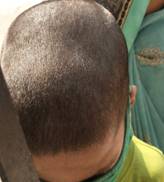 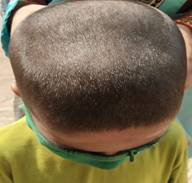
Figure 2: Follow up Photograph No 1of the scalp |
||||
| 4/11/20:
|
Patient is feeling better overall with mild scaling and itching of scalp. No episodes of nocturnal enuresis. | Rx: Oleander 30 1st dilution 4 hourly sac lac 200 3doses HS X 14 days. | ||
| 18/11/20 | Patient is feeling much better overall with no scaling, No Itching. No episodes of nocturnal enuresis. | Rx: Oleander 30 1st dilution daily HS, sac lac 30 3doses HS X 21 days.
After 21 days Single dose of Sulphur 200 single dose was given as Anti Psoric remedy. |
||
|
Figure 3: Follow up Photograph no 2 of scalp |
||||
CONCLUSIONS:
- Boger’s Concept of Tissue Affinity and Disease Location.
- Role of Boger’s approach in treating skin diseases.
- If Primary illness perfectly corresponds with the remedy than other associated symptoms also disappear after remedy administration.
- Understanding the process of remedy differentiation from various authors perspective from different source books.
BIBLIOGRAPHY:
- Dr John Henry Clarke A Dictionary of Practical Materia Medica Vol1, Vol2, Vol 3 Student Edition; Publishers- B. Jain Publishers (P) LTD Year- 2006.
- William Boericke, Boerickes New Manual of Homeopathic Materia medica with Repertory, Second Revised and Re Augmented Edition: 2000 33rdNew Delhi B Jain Publisher (P) Ltd Year- 2014 page no 310, 460,480,507, 586.
- M. Boger, A Synoptic Key of the Materia Medica, New Delhi, B.Jain Publisher (P) Ltd,2007, Reprint 2011, Page no 124,191, 202, 212, 248.
- Lectures on Clinical Materia Medica by E.A. Farrington.
- Synthesis Repertory by Frederick Schroyens.
- Parikh’s Textbook of Forensic Medicine and Toxicology, Eight Edition,2019, CBS Publishers and Distributors Pvt Ltd, Page no 672.
- Dr N.M. Choudhuri, A study on Materia Medica, Second Edition, Revised and Re Augmented Edition: 2001, New Delhi B Jain Publisher (P) Ltd, Page no 745,746 and 747
- C. Allen, Keynotes Rearranged and Classified, 2019, New Delhi, Indian Books and Periodicals Publishers, 181,279,304,355,
- Dr S.R. Phatak, Materia Medica of Homoeopathic Medicines, Second Revised and enlarged edition, B Jain Publishers (P.) Ltd, Page no,328, 498,524,550,639


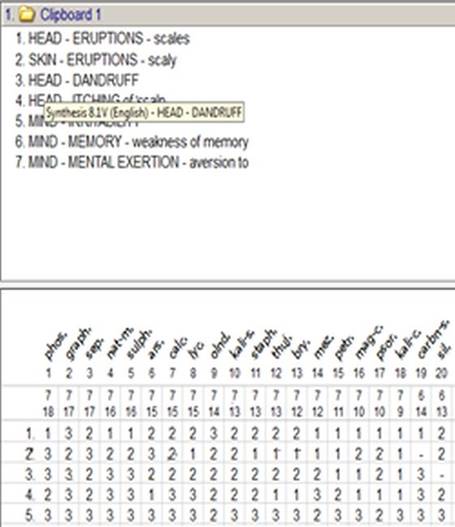

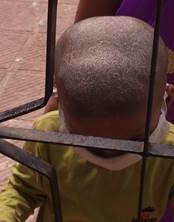
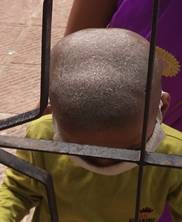

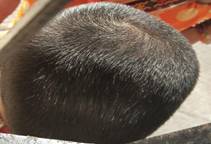
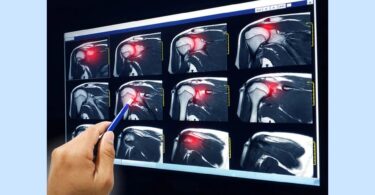
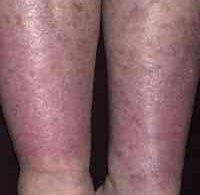


Hi,
Very interesting & knowledgeable article ever read.